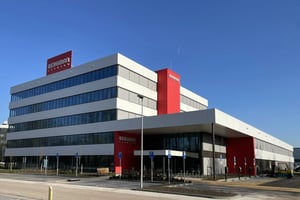In Capital Magazine #5 Hans Durieux talked about his conviction that ‘the capacity for innovation in family-owned companies is generally better than average.’ The COO of family-owned company Dekker Chrysanten says that family-run companies trust their intuition more than ‘regular’ (listed) companies. And it appears that Durieux’s intuition is now getting the scientific evidence to back it up, looking at the results of a recent Swiss study published in the Harvard Business Review.
The general impression of family-owned companies is that they are traditional and risk-averse, two qualities that are not readily associated with innovation. But that stereotype appears to be a misconception, if the results of the study conducted by Nadine Kammerlander (Professor of Family Business at the Otto Beisheim School of Management) and Marc van Essen (Professor of Entrepreneurship and Innovation at the University of St.Gallen School of Management) are anything to go by. They concluded that many family-owned companies are in fact the most innovative in their sector.
The researchers came to this conclusion after a meta-analysis of 108 previous studies in 42 countries. Their method involved offsetting the amount of the R&D investments against the R&D output (expressed in number of patents, new products or extra sales from new products). And lo and behold, it turns out that family-owned companies spend less on average than ‘regular’ companies on R&D and research, but with that more modest investment succeed in getting more bang for their buck. And that effect is strongest when the family is not only owner of the company but keeps the actual management in hand, according to the researchers.
Better ‘feelers’
The researchers postulate a number of possible explanations for this observation. The first is that family-owned companies have more of an eye to preventing waste, and so generally think twice before spending money on something. And when they do invest, they usually do so with a clear target in mind - that means not scattershot on multiple projects at the same time.
Another factor that may play a role is that family-owned companies often have long-term relationships with their suppliers, customers and other stakeholders, which means they may have better ‘feelers’ for promising innovations (analogous to the ‘intuition’ Durieux refers to). The fact that the family operators hold the shares themselves, and as a result can make decisions much more easily and (even more importantly) faster, makes a family company both more flexible and more dogged in the ‘idea to market’ process.
The researchers do place an important caveat alongside all this, however: it is primarily the later generations in the family-owned companies who are the most innovative; companies led by their founders score markedly lower here. According to the researchers, this may mean that over time, family-owned companies learn to better separate the good ideas from the bad, while founders generally do not feel any compunction against pushing ‘risky ideas’ that might not always produce the desired results.
Want to read more? You can find the full study here: http://journals.sagepub.com/doi/abs/10.1177/0007650316661165
_jpg.webp?width=2000&height=2000&name=_AW36723-HDR%20(1)_jpg.webp)












